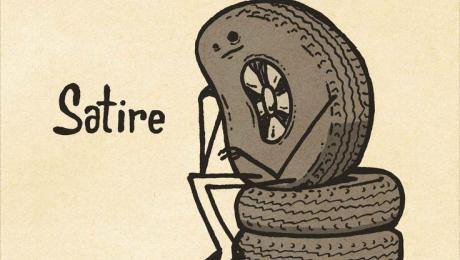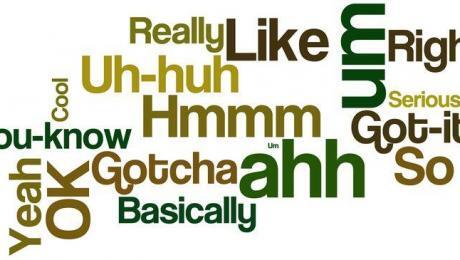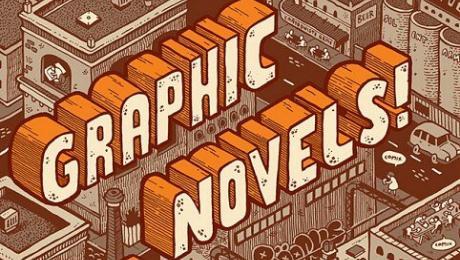Is the Current Climate Boosting the Use of Satire in the United States?
Satire uses humor and irony to criticize society, individuals, or other subjects satirists consider worthy of ridicule. In February of this year, The Independent asked, “Donald Trump has at least made American satire great again – but why didn’t Brexit do the same for Britain?”
The Trump presidency is prime material for satire in this country. The tweeter-in-chief provides plenty of sources for satirists in the media. But what about in American literature?
American Literature Has a Rich History of Satire
Satire has a long history in the U.S., as revealed in Sophia McClennen’s and Remy Maisel’s book, “Is Satire Saving Our Nation?” Cartoons lampooning the English king were popular before the country’s independence. Mark Twain and Benjamin Franklin wrote satire as critics of the culture and politics of their time. Franklin’s “A Witch Trial in Mount Holly” targeted superstition; and a theme of Mark Twain’s “The Adventures of Huckleberry Finn” was a critique of the 19th century society of his time.
Joseph Heller’s “Catch-22” is fiction that demonstrates the diverse uses of satire. Heller skillfully revealed the difference between reality and appearance. Kurt Vonnegut and Chester Himes have also demonstrated the variety in consciously written American satire.
But sometime satire is not consciously produced. For instance, Paul Beatty has also used satire to discuss race and class; but he doesn’t write satire consciously, as he revealed in an interview published in The Paris Review.
Satirical Fiction in the Trump Era
From the colonial period to the present, Americans have responded to satire. The president is a divisive figure as America moves into the minority-majority era. His polarizing politics provide ‘red meat’ for his base and a foil for satirists on both sides of the Atlantic writing fiction inspired by his actions. For example, American satirist Andrew Shaffer wrote “The Day of the Donald: Trump Trumps America,” a thriller and a parody.
British author Howard Jacobson’s “Pussy” is a satirical fable inspired by the newly elected president, while Marc Rosenthal’s and Michael Ian Black’s visual “A Child’s First Book of Trump” is a picture-book that contains humor only adults can appreciate. These satirists have taken the lead that others can follow.
Writing Satire Well Requires Skill
Satire can be humorous; but not all satire is humorous. Humor is a powerful tool in the right hands; Americans respond well to humorous satire as delivered by America’s current television satirists. Through comedy the audience is exposed to subjects deserving criticism. With growing pushback against dissent, is this the time for a new golden age of satirical fiction?
- Published in Writing & Editing Resources
Word Fillers Are Story Killers!
When a writer has a deadline to meet and a word count to fill, it is tempting to make sentences wordier, opting for flowery descriptions rather than powerful prose. Editors will watch for this kind of extra wording and will often delete it in bulk, leaving sentences tighter and more efficient. Filler words also tend to make written pieces boring, turning reading into drudgery when the reader would rather get straight to the point.
The following examples show words that are often overused in writing or are used to fill in space where they are otherwise not needed. Writers should look for these instances in their existing work and fix them wherever possible. They should also make a conscious effort while writing to avoid using such words and instead focus on actions and more pointed descriptors.
Examples in Concise Writing
Lose “that.” “That” is one of those words having virtually no purpose other than taking up space. Take this sentence, for example: “She promised that she would never make the same mistake twice.” Removing “that,” the sentence is just as clear: “She promised she would never make the same mistake twice.”
You “really just only” need to say what you mean. “He really just needed only one car but purchased a second,” would do better as, “He needed one car but purchased a second.” These three words are as annoying to editors and readers as “very,” which is another no-no.
“She was almost slightly drifting on what seemed like air.” Words like “almost,” “slightly,” and “seeming/seems” are boring! These give readers little direction. Saying something is “almost” something tells a reader that it may or may not be, and they will never know. “She was drifting on air,” paints an immediate and clear picture in the reader’s mind.
“Basically,” the word “absolutely” is “actually” unnecessary. If the subject of the sentence is “actually” something, using words like these become redundant. “She was positively certain she would win,” is better written as, “She was certain she would win.”
In descriptive sentences, phrases like “kind of,” “sort of,” and “a little,” convey nothing and are better left out. Readers do not want wishy-washy writing; they want the writer to speak directly and confidently. This builds trust in the writer’s work. “His speech was sort of a hit,” sounds much stronger as, “His speech was a hit!”
Finally, “very” should never be included unless it is vital: for example, in a direct quote. If a descriptor in a sentence is strong enough, this word makes the sentence weak and shows no effort on the writer’s part to convey deeper meaning. Instead of saying, “She was very mad,” remove “very” and try “irate,” “fuming,” or “infuriated.”
In short, writing concisely provides readers a clean, clear read. Readers appreciate this because it allows them to read faster and gain more insight and information, and it holds their attention better than filler words. If a writer needs help getting into this good habit, a thesaurus is a great tool to have handy while writing.
- Published in Writing & Editing Resources
Starting Your Book: First Draft Pitfalls to Avoid
As a writer, do you balk at big projects? Do you wonder where to begin or have problems focusing on the mountain of work before you? If you are beginning a book and can’t figure out where to start, or if you are mid-story and have lost focus, reading through these pitfalls and how to avoid them will motivate you to take action and finally get your book written.
Stop Over-Researching
When writing on a specific topic, it is imperative to research that topic and know what you are talking about. It is counterproductive, however, to read and pick apart every book you can find on the topic by other writers in the field. What you want is your own fresh perspective, not your writing reflecting everyone else’s. Do your research to include in your work, but know when to pull back and add your own thoughts to the topic.
Stop Brain-Storming
While free-writing is a good way for some writers to clear their heads and turn over new ideas, it is not the way to start a book. Give your work focus early on by composing a brief thesis that reflects a perspective your reader will value. This will give your work a solid introduction while keeping your writing on track.
Stop Staring at a Blank Page
Before going on a road trip, smart drivers begin with a map and a clear idea of where they are headed and how they will get there. There may be some detours or delays along the way, but they remain focused on their goal. As a writer, beginning your story without a map will lead you nowhere. Even a loose outline of what you want to cover will keep your writing trained on the task at hand and will alleviate that daunting “staring at a blank page” feeling that can block writing before it begins.
Stop Being Orderly
While it may seem logical to start writing a book at Chapter One, this is actually one of the hardest places to start. Your first chapter sets the stage for the rest of the book and must support the entire story. Likewise, your last chapter must tie the story up into a perfect bow without any loose ends. By writing from your middle chapters first, or even building your story in both directions, you will have enough material to write a solid first and last chapter, perfectly framing your story.
Stop Losing Focus
This is one of the most difficult things to accomplish when writing at length. The sock drawer needs to be organized. Trash needs to go out. A hundred other things need to be done. Despite all this clawing at your attention, your project awaits. If you intend to write a quality piece, give it the attention it deserves, even if that means scheduling time in your day for it like any other job.
Stop Editing
Editing while you write will only hinder your progress. If you are being counterproductive, you will quickly become frustrated and may abandon the project altogether. Nothing has to be perfect in your first draft (or your second, or third). Once you have at least the bare bones of your story in place, then you can worry about smoothing out the wrinkles.
Writing a book is a massive task that can be daunting and frustrating, and make even a professional writer want to throw in the proverbial towel. By kicking these common bad habits, your best writing will happen more easily than you thought possible.
- Published in Writing & Editing Resources
Graphic Novels Are Gaining in Popularity
Graphic novels (another name for comic books) have become increasingly popular with children, teen readers, and adults. The boom in the last 10 years in this category is due to the popularity of Japanese comics with young readers.
The result is that critics recognize the artistic value of graphic novels with awards, and educators are using them as teaching material. For writers interested in trying this medium, no longer considered poor literature, libraries are a good resource. In fact, librarians have noticed they are among their most circulated genre categories.
Reasons for Graphic Novels’ Popularity
Children and teen readers love graphic novels because of their easy-to-read mix of text and visual content. Graphic novels are preferable for readers of limited attention spans. With the advent of the online age and smart phones, young readers’ attention spans have shortened. Academic recognition has also widened exposure to graphic novels, as has e-book lending. Serial graphic novels make the digital format an efficient stocking medium; and tech-savvy teens respond better to digital content.
Adults with limited free time, or who are too exhausted when they have free time, are also gravitating to graphic novels and short stories. Adult readers have discovered that graphic novels possess more depth then the comic books of their youth. The illustrated stories that unfold in graphic novels have the complexity, depth, and variety of traditional novels. With less text they are easier to consume; they stimulate enjoyment by being entertaining, and they have emotional appeal, while providing the intellectual stimulation adults seek in novels.
Critically acclaimed books by Dave Gibbon (Watchmen, released in 1987), Art Spiegelman (Maus, released in 1991), and Alan Moore’s trend-setting works boosted these writers’ circulation. In this decade, traditional publishers have published other acclaimed books by authors including Alison Bechdel (Fun Home, released in 2006), Marjane Satropis (Persepolis, released in 2000), Raina Telgemier (Smile, released in 2010), and Chris Ware (Jimmy Corrigan, The Smartest Kid on Earth, released in 2000).
Why Graphic Novels with LGBT or Sexual Orientation Content Are Increasing
LGBT students are present in almost every high school. Researchers have reported that they constitute between approximately three to ten percent of the student body. School bullying and the high rate of suicide attempts by bullied LGBT pupils appears to be rising. Writers of graphic novels explore this content more because they have researched the preferences of their target audience, including educators, who are using these stories for teaching purposes.
- Published in Writing & Editing Resources
Utilize a Writing Partner to Improve Focus
Even the most seasoned writer can lose focus with their work. Whether working on a freelance article with a tight deadline or a full-length novel involving extensive research, things can and will get in the way. At times, this can make a writer feel unproductive, questioning their own abilities and undermining confidence in their work. One way to resolve such problems is to enlist the help of a writing partner.
Motivational Partners
Sometimes, all it takes is a fresh pair of eyes to find a hole in a story or a character flaw, or to provide a fresh perspective. When someone reads another writer’s work from their own perspective, they may see it as the reader might. This allows them the space from the original work to post questions readers would pose. They can then fill in the blanks, giving that written work a spark the writer would otherwise not expect. When a writer sees fresh words entangled with their own, it may refocus their attention.
Motivational partners are also fantastic at helping combat writers’ block. When a writer looks at a story long enough, the words begin to blend together. It can be difficult to figure out where a scene or even an entire plot is going. In this case, a writing partner can identify where a story dropped and either add a new twist or continue developing the writing from a seemingly dead end. Co-written stories often have a wonderful flow and a subtly changing perspective that keeps readers interested.
Teaching Partners
While engaging a writing partner is a rich source of motivation, a plethora of learning opportunities also exists. If both writing partners are willing and able, each can benefit by raising the other’s writing skills in a friendly, creative atmosphere. A writing partner can bring new styles for a stuck writer to try on their own, and can be a viable source of tips and tricks for honing one’s writing. As a worst case scenario, another writer below one’s own caliber can teach us how not to approach something.
Looking for a writing partner or even accepting that one may be needed can be a humbling experience, especially if a writer does not find the best partner right off the bat. Like anything, it is a path of trial and error. When an author is unafraid to step outside their comfort zone, they will find new inspiration in often unlikely places.
- Published in Writing & Editing Resources





